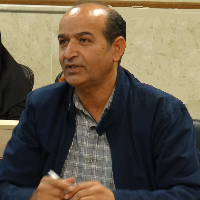Qualitative analysis of factors affecting the development of nomadic tourism (Case study: Shahsavan nomads)
Wrong policies regarding the nomadic community have caused the number of nomadic populations to decrease compared to the past and the nomads are being pushed towards monogamy. Meanwhile, the nomadic community of Iran has high potentials to attract tourists, the income of which can be considered as a complementary livelihood option for nomads. The use of tourism capabilities requires policy-making and knowledge of the factors affecting the development of nomadic tourism. Accordingly, the purpose of this study is to identify the factors affecting the development of nomadic tourism as a complement to nomadic livelihood. This research is a qualitative research and has been done using the content analysis of semi-structured interviews with experts. Thematic analysis was used to extract the hidden concepts related to the factors affecting nomadic tourism and were classified into two categories of positive and negative factors. Positive factors that have a positive impact on the development of nomadic tourism include: social capital, government activism, environmental power, cultural and symbolic capital, economic power, facilities and infrastructure, and empowerment of nomadic society. Negative factors in the development of nomadic tourism also included cultural barriers, social barriers, environmental barriers, cognitive-knowledge barriers, and inattention to nomads.
-
Analysis Of Overtourism From The Point Of Smart Tourism View
Mehdi Karoubi *, , Seyed Mojtaba Mahmoudzadeh, Nastaran Pouyanzadeh
Journal of tourism and development, -
Designing a renewable energy policy formulation model by considering energy architecture indexes
Maryam Darabi, Abolhasan Faghihi *, Gholamreza Memarzadeh Tehran
Journal of Public Administration Perspective, -
Identifying the pattern of Syrian tourism development in the post-crisis period"with an emphasis on the city of Damascus"
Buthaina Almostafa, Esmaiel Ghaderi *, , Seyed Mojtaba Mahmoudzadeh
journal of urban tourism, -
Designing a model based on existing damages in the implementation of electronic government in Iran:(case study of the Ministry of Sports and Youth)
Sahar Zare, Abolhasan Faghihi *, Reza Najafbagy
Strategic Studies On Youth and Sports, -
Evaluating the geomorphological and geotourism potentials of Astara city using Hadzik and Fiolet models.
Aysa Sasanian, *, Behrouz Nezafat Taklhe
Journal of Geography and Human Relations, -
Examination and analysis of the influence of environmental hazards in the development of geotourism in Ardabil province (case study: Hir city)
*, Behrouz Nezafat Taklhe
Journal of Geography and Human Relations,




